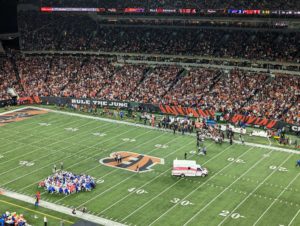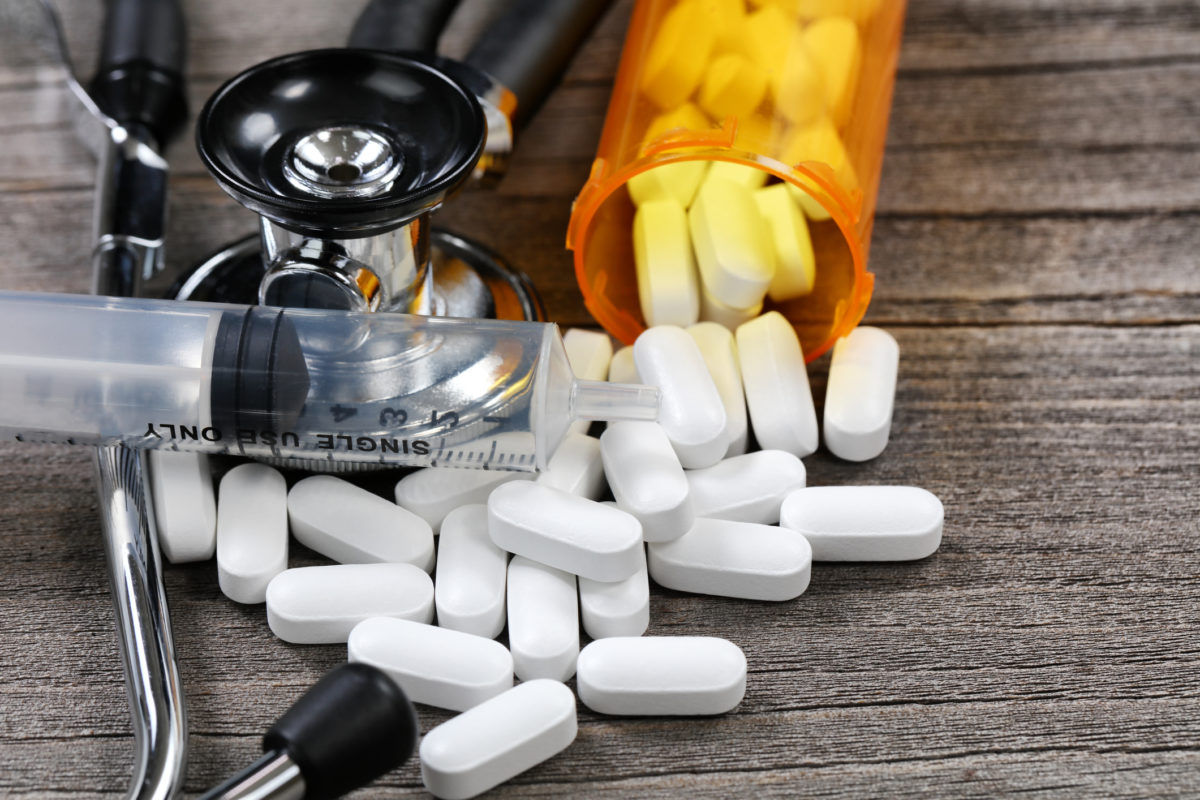
While Buffalo Bills safety Damar Hamlin remains in critical condition after suffering cardiac arrest”¯during a Bills-Cincinnati Bengals game on “Monday Night Football” Jan. 2, he has improved substantially. Doctors at the University of Cincinnati Medical Center, where he is being treated, have announced that his “neurological condition and function is intact” and he’s “beginning to awaken” ”“ no doubt due in part to the immediate attention he received after collapsing during a tackle at Paycor Stadium.”¯
The American Heart Association ”“ which recently named Hudson Valley native Amanda Palumbo as its new executive director in Westchester and Fairfield counties ”“ noted that early recognition of cardiac arrest, in which the heart stops abruptly with little or no warning, improves the person”™s chance of survival and is key to beginning the correct care of CPR and the appropriate use of defibrillation to restart the heart.
CPR”¯can help keep the heart pumping and”¯blood flowing to vital organs, especially the brain, until an electrical shock from a defibrillator is available to restore the heart to a normal heart rhythm. Then the patient can be safely moved for further medical treatment, supportive care, testing to determine what the cause of the arrest may have been and recovery, including both physical and mental health resources for the person and family. (On Jan. 2, the onsite medical team evaluated the situation and appeared to move quickly, removing Hamlin”™s safety pads, beginning CPR and applying the automated external defibrillator, or AED).”¯”¯
Cardiac arrest, which affects an estimated 350,000 Americans each year, can have several causes. Since Hamlin collapsed immediately following a tackle on the play, one potential cause could be commotio cordis ”“ a rare phenomenon resulting from a sudden blow to the chest at precisely the wrong time in the cardiac cycle, causing an electrical abnormality in the heart and resulting in”¯an irregular heart rhythm that cannot pump blood to the body.”¯
Another cause of cardiac arrest that additional tests are likely to attempt to detect or rule out is ”¯hypertrophic cardiomyopathy”¯(HCM) or a thickened heart muscle ”“ a more
common cause of sudden cardiac death in young people and athletes specifically.”¯The thickened heart can be due to a genetic condition or can be caused by athletic”¯
conditioning that can make it more susceptible to an irregular rhythm like ventricular fibrillation/tachycardia.
While having community members trained in CPR and AEDs in public spaces can increase the chances of survival, the rate of bystander CPR in North America is estimated at only 39 to 44%, and only about 1 in 10 people survive an out-of-hospital cardiac arrest. Compounding the challenge: Roughly 70% of cardiac arrests that do not happen in the hospital occur in homes and private residences. Therefore, a friend or family member is mostly likely to be the person who needs to take action.”¯Improving the rate of bystander CPR is critical to increasing survival from out-of-hospital cardiac arrest (OHCA).
As we saw on “Monday Night Football,” witnessing and responding to a cardiac arrest can be a traumatic event and may cause lingering psychological effects regardless of the outcome. Lay responders and witnesses may need support and resources to help process their experience.
Responders have cited exhaustion, guilt, flashbacks, sleep disturbances, self-doubt, anger, sadness and fear. A good outcome in performing CPR can mitigate some of the emotional responses. However, psychological responses are wide-ranging and individualized. In situations with a failed resuscitation attempt, PTSD symptom scores were twice as high for responders as those for non-witnesses.
”¯“This was traumatic”¯for everyone, especially Hamlin”™s family and teammates but also for so many others involved and witnessing the event,” said Mariell Jessup, M.D., FAHA, chief science and medical officer of the American Heart Association. “Recognizing a cardiac arrest, calling 911 immediately, performing CPR and using an AED as soon as it is available are critical for survival. Statistically speaking, it is likely that the person will need to be helped by a family member or a friend in order to survive.”
CPR, especially if performed immediately, can double or triple a cardiac arrest victim”™s chance of survival. For adults and adolescent children,”¯Hands-Only CPR”¯is an easy-to-learn skill that requires only two steps: Call emergency services and push hard and fast in the center of the chest at a rate of 100 to 120 beats per minute.


















